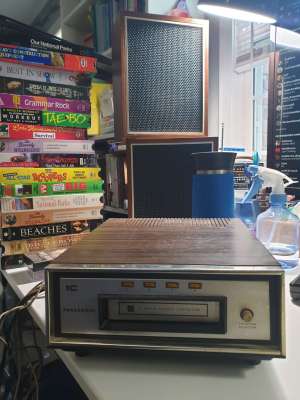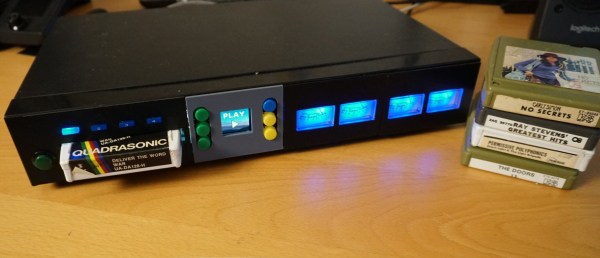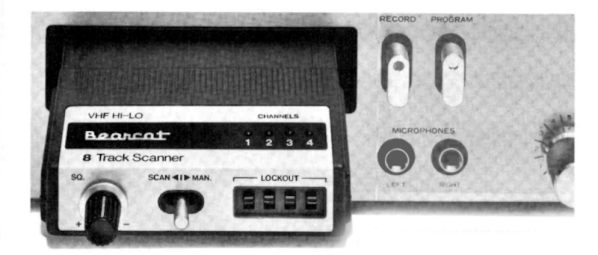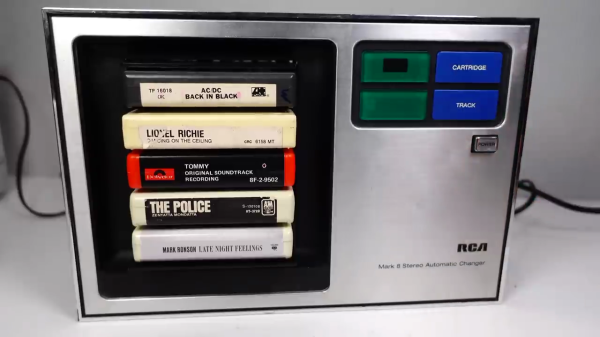There was a time in the not-too-distant past when magnetic tape was the primary way of listening to and recording audio. Most of us are familiar with the cassette tape, a four-track system that plays first one side of the tape, then the other. There was the eight-track tape as well which did not have quite as much popularity or longevity but did have a few interesting features that [Serial Hobbyism] took advantage of to make an interactive game.
The defining feature of the eight-track system, beyond the obvious eight tracks on the tape, is that the tape runs in a continuous loop, never needing to be stopped or flipped over. Instead, four buttons select pairs of the eight tracks, moving a head immediately to make the switch on-the-fly. [Serial Hobbyism]’s game plays a trivia-style audio recording and asks the player to answer questions by pushing one of the four “program” buttons to switch tracks. If the correct track is selected, the recorded audio congratulates the player and then continues on with the game. Likewise, if an incorrect track is selected, the recording notes that and the game continues.
Another interesting feature of this game is that it can be played without modifying an eight-track player, as the selectable tracks are a core function of this technology. They can be used in a similar way as cassette tapes to store computer data and a data recorder similar to the eight-track system was used on the Voyager space probes, although these only bear a passing resemblance.



















